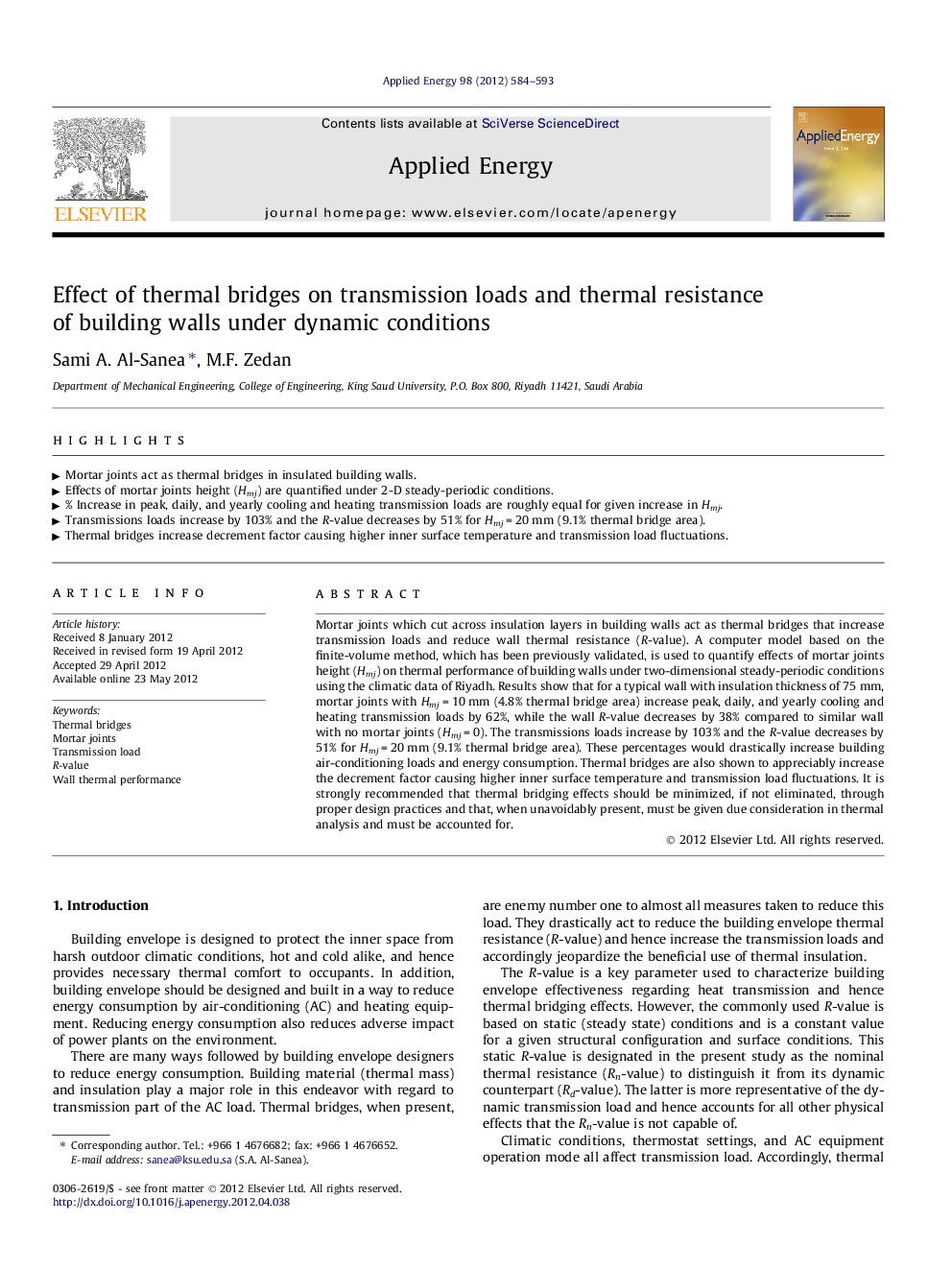| کد مقاله | کد نشریه | سال انتشار | مقاله انگلیسی | نسخه تمام متن |
|---|---|---|---|---|
| 243244 | 501923 | 2012 | 10 صفحه PDF | دانلود رایگان |

Mortar joints which cut across insulation layers in building walls act as thermal bridges that increase transmission loads and reduce wall thermal resistance (R-value). A computer model based on the finite-volume method, which has been previously validated, is used to quantify effects of mortar joints height (Hmj) on thermal performance of building walls under two-dimensional steady-periodic conditions using the climatic data of Riyadh. Results show that for a typical wall with insulation thickness of 75 mm, mortar joints with Hmj = 10 mm (4.8% thermal bridge area) increase peak, daily, and yearly cooling and heating transmission loads by 62%, while the wall R-value decreases by 38% compared to similar wall with no mortar joints (Hmj = 0). The transmissions loads increase by 103% and the R-value decreases by 51% for Hmj = 20 mm (9.1% thermal bridge area). These percentages would drastically increase building air-conditioning loads and energy consumption. Thermal bridges are also shown to appreciably increase the decrement factor causing higher inner surface temperature and transmission load fluctuations. It is strongly recommended that thermal bridging effects should be minimized, if not eliminated, through proper design practices and that, when unavoidably present, must be given due consideration in thermal analysis and must be accounted for.
► Mortar joints act as thermal bridges in insulated building walls.
► Effects of mortar joints height (Hmj) are quantified under 2-D steady-periodic conditions.
► % Increase in peak, daily, and yearly cooling and heating transmission loads are roughly equal for given increase in Hmj.
► Transmissions loads increase by 103% and the R-value decreases by 51% for Hmj = 20 mm (9.1% thermal bridge area).
► Thermal bridges increase decrement factor causing higher inner surface temperature and transmission load fluctuations.
Journal: Applied Energy - Volume 98, October 2012, Pages 584–593